Are Rising EV Inventories Proof Nobody Wants Them?

Those who follow the automotive industry will have undoubtedly noticed that dealer inventories are slowly approaching levels that would have been considered normal before the pandemic. While this is presumably good news for people who have absolutely had it with dealerships marking up their products, some are growing concerned by how much electric vehicle inventories are outpacing their gasoline-reliant counterparts.
Despite elevated fuel prices, aggressive marketing, and most companies vowing to transition toward building electrified automobiles exclusively, America has an EV supply of more than 100 days on dealer lots. That’s about double the average for gasoline vehicles. While it would seem that people are losing interest in battery-driven automobiles, industry experts are claiming that all is not as it seems.
While alleged experts have certainly proven their fallibility in recent years, there are reasons to buy into the claim. Things are often less simple than they appear on their face and EVs certainly qualify. For starters, the market share of electrified autos has continued to increase.
The Department of Energy has reported that the U.S. share of battery electric vehicles has grown from a negligible fraction of a percent to over 6 percent between 2018 and 2023. Take rates for plug-in hybrids have also increased, albeit at a much slower rate. It’s definitely not happening at the pace that the Biden administration wanted, as the White House set a goal of making half of new-vehicle sales electric by 2030. But we’re still moving gradually in that direction.
There’s also a large disparity in what’s popular among EVs. Some models aren’t very competitive and effectively exist as compliance vehicles. Others are global models that are poorly suited to the North American market (too small, bad range). Then there are the premium luxury models that trade on offering more features, larger batteries, and cultural cachet. The point is that the segment hasn’t fully matured and currently caters to wealthier consumers who see these as status vehicles.
However, government incentives (EV tax credits) have made them more attractive in the general sense. The Tesla Model Y may still be on the pricier side of affordable EVs, lack the fit-and-finish of other models, and be a little too barren inside for some tastes. But it’s no more expensive than the average automobile sold today after tax credits are accounted for, wears a desirable badge, and stresses the fundamentals of what makes EVs desirable in the first place. That’s been enough to make it one of the top ten best-selling automobiles in North America.
Tesla is still mopping the floors with other EV providers and it seems to stem from a mix of product design, careful pricing, and offering consumers a sense of exclusivity. The latter item is something that’s been bolstered by the way Tesla products are sold. While rival brands now have electric cars sitting around the lot, Tesla forces its customers to wait until the vehicle can be delivered.
Surplus inventories aren’t a great way to make something appear desirable. But Tyson Jominy, vice president of data and analytics at J.D. Power, recently told Automotive News this is the result of supply chain improvements. Due to how the world handled the pandemic, supply chains were left in shambles and everyone claimed to be unable to meet demand for years. That appears to be changing now, with Jominy suggesting it has contributed to rising EV inventories.
"The story that demand for EVs is slowing is patently false," he said.
Cox Automotive inventory data showed 103 days' supply of EVs through June. But that doesn’t include Tesla models due to the fact that they’re not solid using the dealership model.
It’s not the only big disparity in the data. As previously noted, there’s a pretty big gap between which electric models are popular and that gap is reflected in terms of supply.
From Automotive News:
Days' supply tallies vary by model. For example, Cox's averages by model ranged from 23 days, for the Chevrolet Bolt EUV, to 181 days for the Nissan Ariya. Most EV models had more than 100 days' supply, Cox said.
GM spokesman Jim Cain said the typical days' supply calculation looks backward and can obscure what's really going on in the market for a specific vehicle. For example, to calculate the days' supply at the start of August, July's month-end inventory would be divided by July's sales, then multiplied by the number of selling days in July. J.D. Power’s calculation is slightly different, always multiplying by 30 days, rather than the number of selling days in a given month.
"If you have low sales, which is common for vehicles that are launching, and rising inventory, which is also expected for launch vehicles, you get a high days' supply number," Cain said. "The reading can be further misleading if a significant amount of that inventory is in transit to dealers and not available for sale."
Days' supply figures tell the inventory story best when the product is in a steady state, said Chris Harto, senior policy analyst at Consumer Reports. With EVs, some automakers are shutting down plants and struggling with production hiccups, while others have increased U.S. production beyond the level of demand.
"There are some issues ... driving really significant conclusions from one point in time," Harto said.
There are also broad disparities in terms of where interest is coming from. Coastal metropolitan hubs tend to see greater demand for all-electric vehicles than anywhere else in the United States. Rural areas are less interested due to there being lackluster charging infrastructure and lower-income households. Regions with particularly cold winters also seem hesitant to embrace electrification, as driving ranges tend to vary widely at extreme temperatures.
Though there are certainly exceptions. Your author currently lives in the woods where you’d expect to see a lot of gasoline-powered pickups and SUVs. They’re certainly prevalent. But there are enough wealthy neighbors and nearby cities to guarantee above-average EV sales.
Even in California, where emission standards are higher than the rest of the nation and electric cars are vastly more popular, there’s a noteworthy decline in volume among dealerships located away from urban areas. Regional demand is something the industry needs to figure out as it likewise attempts to gauge overall demand for battery-powered cars.
"We are trying to balance having enough inventory and enough demand," said Sam Fiorani, vice president of vehicle forecasting at AutoForecast Solutions. "There will be points where one is ahead of the other."
But some of the optimism seems unwarranted. EV sales may be progressing steadily in places like California, which has set a firm timeline for when all automobiles sold within the state have to be electric. But other parts of the country aren’t following suit.
While this may become irrelevant as federal emissions standards reach a point that they effectively become EV mandates or fuel prices continue breaking records, there’s a subset of today’s buyers who clearly are not interested.
Their reasons span the gamut. Many don’t believe they’ll suit their lifestyle, others are concerned about serviceability, and some are skeptical about the environmental claims as new information comes out about the perils of cobalt and lithium mining. There are even people who claim they simply don’t like the feeling that EVs are being foisted upon them via regulatory pressure.
Your author is in regular contact with several people that spend their days selling automobiles. All of them have expressed difficulties selling all-electric vehicles this year. While a few attributed this to pricing disparities, every one of them noted that there is a group of shoppers that are inherently disinterested in owning a vehicle that’s wholly reliant on battery power.
But anecdotal evidence doesn’t necessarily explain why EV inventories are outpacing liquid-fueled models. It seems far more plausible that it’s a combination of everything we’ve covered thus far. But it’s certain that legacy manufacturers haven’t yet cracked the code in terms of widespread EV acceptance and may have gotten ahead of themselves here.
[Images: Nissan; General Motors; Tesla]
Become a TTAC insider. Get the latest news, features, TTAC takes, and everything else that gets to the truth about cars first by subscribing to our newsletter.

A staunch consumer advocate tracking industry trends and regulation. Before joining TTAC, Matt spent a decade working for marketing and research firms based in NYC. Clients included several of the world’s largest automakers, global tire brands, and aftermarket part suppliers. Dissatisfied with the corporate world and resentful of having to wear suits everyday, he pivoted to writing about cars. Since then, that man has become an ardent supporter of the right-to-repair movement, been interviewed on the auto industry by national radio broadcasts, driven more rental cars than anyone ever should, participated in amateur rallying events, and received the requisite minimum training as sanctioned by the SCCA. Handy with a wrench, Matt grew up surrounded by Detroit auto workers and managed to get a pizza delivery job before he was legally eligible. He later found himself driving box trucks through Manhattan, guaranteeing future sympathy for actual truckers. He continues to conduct research pertaining to the automotive sector as an independent contractor and has since moved back to his native Michigan, closer to where the cars are born. A contrarian, Matt claims to prefer understeer — stating that front and all-wheel drive vehicles cater best to his driving style.
More by Matt Posky
Latest Car Reviews
Read moreLatest Product Reviews
Read moreRecent Comments
- Carson D They'd have kept it going, but the head bolts had worn out from overuse.
- ToolGuy Superb writeup. Thank you for sharing your experience and insights on your 2004 Outback -- this is the best take on Subaru ownership that I've seen.
- Scott I'm afraid of Clickbait, as it's so annoying..(And don't ask me about autonomous car clickbait)
- ToolGuy Nice writeup. Good photography.
- Detlump I almost bought a dark red one of these when I was cross-shopping Volvo wagons. I didn't like the frameless glass of the doors but it was a close call. I wanted a wagon for my hockey gear and also carrying parts as I was an engineer at the time. SUVs weren't a thing at that point and I wanted an enclosed, secure cargo area.I ended up going with a 95 850 wagon and it has served me well. The only time it left me stranded (temporarily) was when the coil wire popped off. I also got a flat tire, but I can't blame the Volvo for that. BTW, I still have the 950 with 263,000 miles - just changed the timing belt too - I have that process down to about an hour by now!





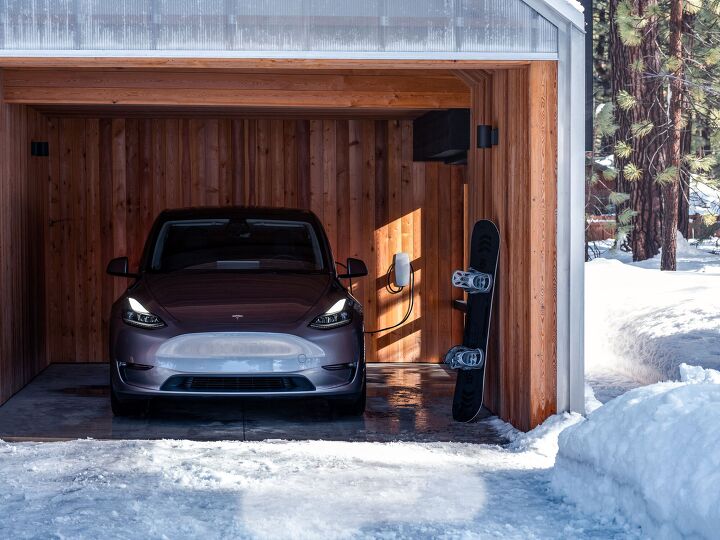




















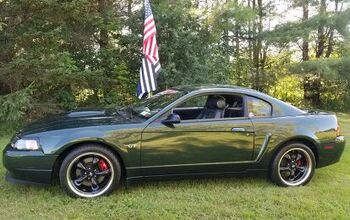
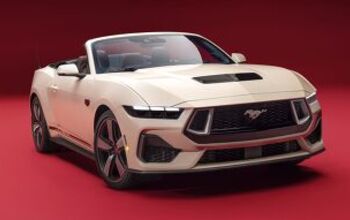

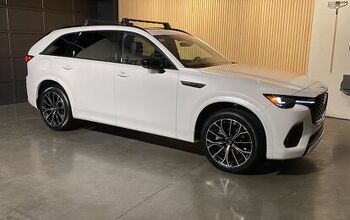


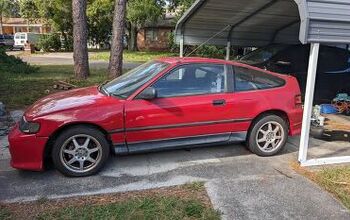
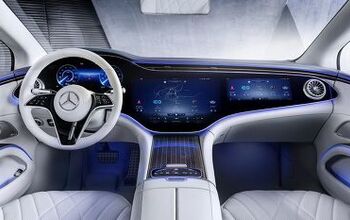
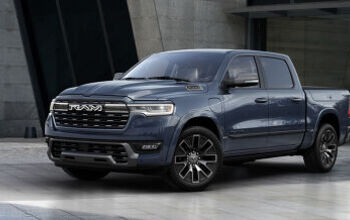

Comments
Join the conversation
"nobody wants" most of the 100s of LOSER EV models made, at huge losses per vehicle, by the LEGACY makers.
But ALMIGHTY TESLA still has excellent demand, and has the profitability to even still lower its prices to make it even greater and dominate the BEV industry even more than it does already.
TESLAS are the APPLE of BEVs
Every other BEVs are just Androids.
This article seems to be pro EV propaganda. At a Toyota dealership last week and the high pressure push to look at electric cars only ended when i said i will never buy an electric car. Plenty electric cars on hand, 6 to 8 week wait for a real car. I would look at a hydrogen car when that pricing gets real.